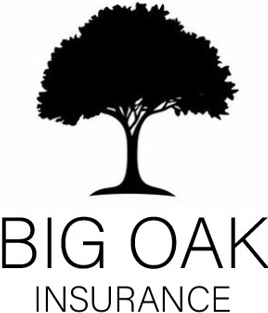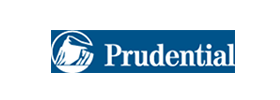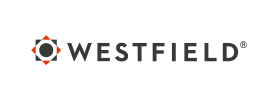Insurance Terms
Navigating the complex world of insurance and its jargon can be intimidating. We always want to make sure that our clients understand their coverages.
We have included some common terms that are often not fully understood. We are always happy to elaborate on any of these.
Full Tort/No Limitations vs Limited Tort/Limitations
"Full tort" is a term often associated with auto insurance in the context of personal injury protection (PIP) coverage. In the United States, particularly in no-fault insurance states, individuals may have the option to choose between "full tort" and "limited tort" coverage.
- Full Tort Coverage: Choosing full tort coverage means that, in the event of a car accident, the policyholder retains the unrestricted right to sue the at-fault party for all damages, including pain and suffering, without limitations. This option generally leads to higher insurance premiums but provides the policyholder with broader legal rights in the event of a personal injury.
- Limited Tort Coverage: On the other hand, selecting limited tort coverage typically results in lower insurance premiums but comes with restrictions on the policyholder's ability to sue for non-economic damages, such as pain and suffering, unless the injuries meet certain criteria like severe impairment of bodily function. Limited tort is designed to limit the number of lawsuits and promote faster, less contentious resolution of claims.
The choice between full tort and limited tort is an important decision when purchasing auto insurance, as it can have implications for a policyholder's ability to seek compensation in the aftermath of an accident. It's crucial for individuals to carefully consider their options and understand the potential legal consequences associated with their choice of tort coverage. Insurance regulations and options may vary by state, so it's advisable to consult with an insurance professional or legal advisor for specific information related to your location.
Collision Coverage Vs. Comprehensive Coverage
Collision coverage and comprehensive coverage are two types of auto insurance coverages that provide financial protection for different types of events.
- Collision Coverage:
- Purpose: Collision coverage is designed to cover the costs of repairs to your vehicle in the event of a collision with another vehicle or object, regardless of who is at fault.
- Coverage: It typically covers damage to your vehicle caused by accidents, such as collisions with other vehicles, hitting a stationary object, or if your car rolls over.
- Example Scenarios: If you're involved in a car accident, whether it's a simple fender-bender or a more severe collision, collision coverage would help pay for the repairs to your vehicle.
- Comprehensive Coverage:
- Purpose: Comprehensive coverage, sometimes referred to as "comp coverage," provides protection for damage to your vehicle that is not caused by a collision.
- Coverage: It covers a wide range of non-collision events, including theft, vandalism, natural disasters (such as floods or earthquakes), falling objects, fire, and collisions with animals (like hitting a deer).
- Example Scenarios: If your car is damaged due to a hailstorm, if it's stolen, or if you collide with an animal on the road, comprehensive coverage would come into play.
It's important to note that both collision and comprehensive coverages are typically optional and may be subject to a deductible, which is the amount you pay out of pocket before your insurance kicks in. Additionally, if you have a car loan or lease, the lender may require you to have both collision and comprehensive coverage.
Uninsured/Underinsured Motorist Coverage:
Uninsured/underinsured motorist (UM/UIM) coverage is a type of auto insurance that provides protection in the event you are involved in an accident with a driver who either has no insurance or insufficient insurance to cover the costs of the damages and injuries.
Here are the key components of uninsured/underinsured motorist coverage:
- Uninsured Motorist (UM) Coverage:
- Purpose: UM coverage comes into play when you are involved in an accident with a driver who does not have any auto insurance.
- Coverage: It helps cover your medical expenses, lost wages, and other damages resulting from the accident when the at-fault party is uninsured.
- Example Scenarios: If you're hit by a driver who doesn't have insurance, your uninsured motorist coverage can step in to provide financial protection.
- Underinsured Motorist (UIM) Coverage:
- Purpose: UIM coverage is relevant when the at-fault driver has insurance, but their coverage limits are insufficient to cover the full extent of your damages.
- Coverage: UIM helps bridge the gap between the at-fault driver's insurance limits and your actual expenses, up to the limits of your UIM policy.
- Example Scenarios: If the at-fault driver's insurance coverage is not enough to cover your medical bills and other damages, your underinsured motorist coverage can help make up the difference.
Having UM/UIM coverage is optional in many states, but it's generally considered a valuable addition to your auto insurance policy. It provides an extra layer of protection, especially in situations where the responsible party lacks adequate insurance coverage.
PIP:
In New Jersey, Personal Injury Protection (PIP) is a mandatory component of auto insurance coverage. PIP coverage is designed to provide benefits for medical expenses, lost wages, essential services, and funeral expenses resulting from a covered auto accident, regardless of who is at fault.
Here are some key features of PIP coverage in New Jersey:
- No-Fault System:New Jersey operates under a no-fault auto insurance system. This means that, regardless of who caused the accident, each party's own insurance company is responsible for covering their medical expenses and other losses through their PIP coverage.
- Coverage Components:
- Medical Expenses: PIP covers necessary and reasonable medical expenses related to injuries sustained in an auto accident. This includes hospital bills, doctor visits, and rehabilitation costs.
- Lost Wages: PIP provides coverage for a portion of the income you lose due to injuries sustained in an auto accident, up to the policy limits.
- Essential Services: PIP may cover the cost of essential services, such as household chores or childcare, that you are unable to perform due to your injuries.
- Minimum Coverage Limits: : New Jersey law establishes minimum PIP coverage limits that auto insurance policies must provide. As of my last knowledge update in January 2022, the minimum PIP coverage limits are $15,000 per person per accident for medical expenses and $5,000 per accident for funeral expenses.
- Additional PIP Options: New Jersey drivers may have the option to purchase additional PIP coverage, commonly referred to as "additional PIP" or "extended PIP." This can provide increased coverage limits and additional benefits.
It's important to note that PIP coverage is mandatory in New Jersey, and failure to maintain the required coverage may result in penalties. Additionally, if you wish to pursue a lawsuit against the at-fault party for pain and suffering, there are limitations based on the severity of injuries.
Auto Liability Coverage:
Liability coverage is a fundamental component of auto insurance that provides financial protection to the policyholder if they are found legally responsible for injuries or property damage resulting from a car accident. This coverage is typically required by law in most states, and it helps cover the costs associated with third-party injuries, medical expenses, and property damage.
Home Liability Coverage:
Home liability coverage, often referred to as personal liability coverage, is a component of homeowners insurance that provides financial protection in case you are found legally responsible for injuries to someone else or damage to their property while on your property. This coverage is designed to help protect your assets and cover legal expenses if you are sued for negligence.
Here are key aspects of home liability coverage:
- Bodily Injury Liability: If someone is injured on your property, your liability coverage can help pay for medical expenses, rehabilitation, and other related costs. This coverage extends beyond your property, potentially covering incidents that occur away from your home as well, such as your dog biting someone at a park.
- Property Damage Liability: If you or a family member accidentally damage someone else's property, your liability coverage can help cover the costs of repair or replacement. This can include damage caused by your child throwing a baseball through a neighbor's window, for example.
- Legal Defense Costs: Home liability coverage typically includes coverage for legal defense costs. This is important because legal fees can be substantial even if you are not ultimately found liable.
- Additional Coverages: Some homeowners insurance policies may offer additional liability coverages. For example, you might have coverage for libel or slander, which could protect you if you are sued for making defamatory statements.
It's crucial to review your homeowners insurance policy to understand the limits of your liability coverage and any exclusions that may apply. Insurance professionals often recommend obtaining liability coverage limits that are sufficient to protect your assets. If your liability coverage limits are exceeded, you may be personally responsible for the remaining expenses.
Personal Umbrella Policy:
A Personal Umbrella Policy (PUP) is an extra layer of liability insurance that provides additional coverage beyond the limits of your primary homeowners, auto, or watercraft insurance policies. It acts as a "umbrella" because it covers a broad range of potential liabilities, providing higher liability limits to protect your assets in case you are found legally responsible for damages or injuries.
Here are key features of a Personal Umbrella Policy:
- Extended Liability Coverage: A PUP provides coverage for liability claims that exceed the limits of your underlying insurance policies. This can include coverage for bodily injury, property damage, and personal injury claims.
- Wide Range of Coverage: A personal umbrella policy can extend coverage to various aspects of your life, including incidents that occur at your home, while driving your car, or during recreational activities.
- Legal Defense Costs: Similar to the liability coverage in homeowners and auto insurance, a PUP typically includes coverage for legal defense costs. This is crucial, as legal expenses can be substantial even if you are not ultimately found liable.
- High Coverage Limits: Personal Umbrella Policies usually offer high coverage limits, often starting at $1 million and going up in increments. The higher limits can provide increased protection for your assets.
- Coverage for Uninsured/Underinsured Motorists: Some umbrella policies may include coverage for bodily injury caused by an uninsured or underinsured motorist, filling the gap left by insufficient coverage from another party.
It's important to note that a Personal Umbrella Policy is not a stand-alone policy. To qualify for a PUP, you typically need to have certain mini.




















